Thursday, November 18, 2021 (continued)
After lunch we headed back to the
Asheville Art Museum, taking advantage of our Tyler Arboretum membership for free admission.
 |
Reflections on Unity (2019, by
Henry Richardson) |
 |
Thomas Wolfe Memorial Angel (1983, by
Dan Millspaugh) is a copy of the grave
marker angel carved by Thomas Wolfe's
father and referenced in the novel,
Look Homeward, Angel |
Apparently the novel by Thomas Wolfe,
Look Homeward, Angel, is autobiographical, although the name of the town in the book was Altamont. At the time, the book was banned in Asheville because many people felt it portrayed Asheville and its people negatively.
 |
| Pin River: French Broad River (2007, by Maya Lin) |
 |
| Pin River: French Broad River detail |
 |
Even the elevator had art: Elevation (2019,
by Melissa Terrezza Pace) |
 |
Feeding the Family (1990, by Barry Gurley Huffman
at a time she was frustrated by a call from family
asking when she would be home to make dinner) |
 |
| Black Panther (1988, by Howard Finster) |
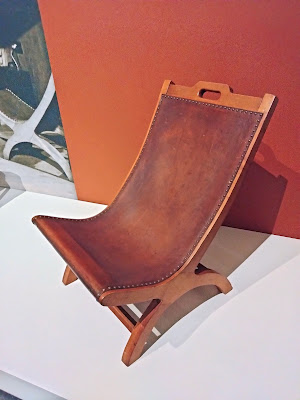 |
Lazy-J Chair (c 1941-1945, by Mary "Molly"
Gregory at Black Mountain College) |
 |
Japanese Magnolias (1945, by Zelda Sayre
Fitzgerald, wife of F Scott Fitzgerald) |
 |
Untitled S.372 (c 1954, by Ruth Asawa
at Black Mountain College) |
 |
| Untitled S-372 detail |
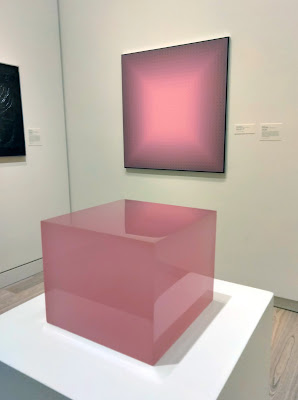 |
Lovett (2009, by Peter Alexander) and
Filtration, Cerise (1977, by Julian Stanczak) |
 |
| No Food on the Table (1992, by Joe Minter) |
 |
How Plants Travel (1989, by Michael Sherrill
from Providence RI) |
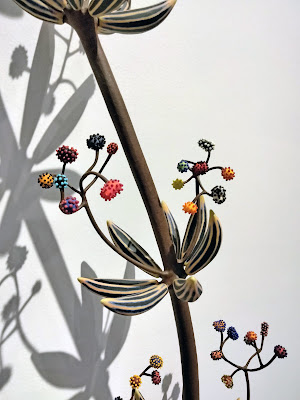 |
| How Plants Travel detail |
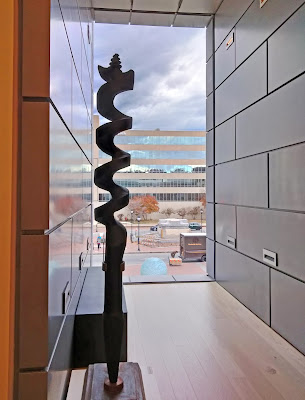 |
| Dawn (2011, by Rick Beck) |
 |
The illusion was that there is
no glass in the opening |
 |
| The Ice Sculpture (2020, by Margaret Curtis) |
 |
| Marilyn (2014, by Roger Shimomura) |
 |
| Kyoto Homage series tea set (1980, 1991, by Dorothy Hafner) |
 |
Untitled photograph from Time of Change series
(1961, by Bruce Davidson) shows the founding
Freedom Riders at a lunch counter, including a
young John Lewis with his heaad down |
 |
The 16th Street Baptist Church (1964, by Mack Stanley) depicts
the event of the bombing of the church in Birmingham, AL |
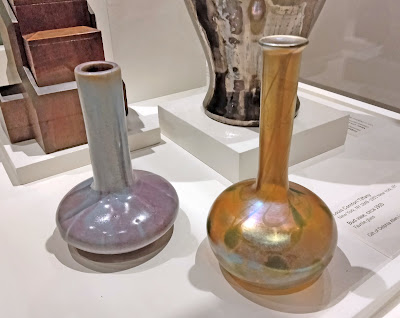 |
Which bud vase would you choose? One the L
(c 1925, from Fulper Pottery Co, NJ) or one on the R
(c 1910, By Louis Comfort Tiffany)? |
 |
Cameo pottery: Square Dancers Teapot (1953,
by Walter B Stephen at Nonconnah Pottery) |
 |
Spiral (2015, by George Peterson) is made
from recycled skateboards |
 |
| Wing 1 (1992, by Kenneth Snelson) |

























































